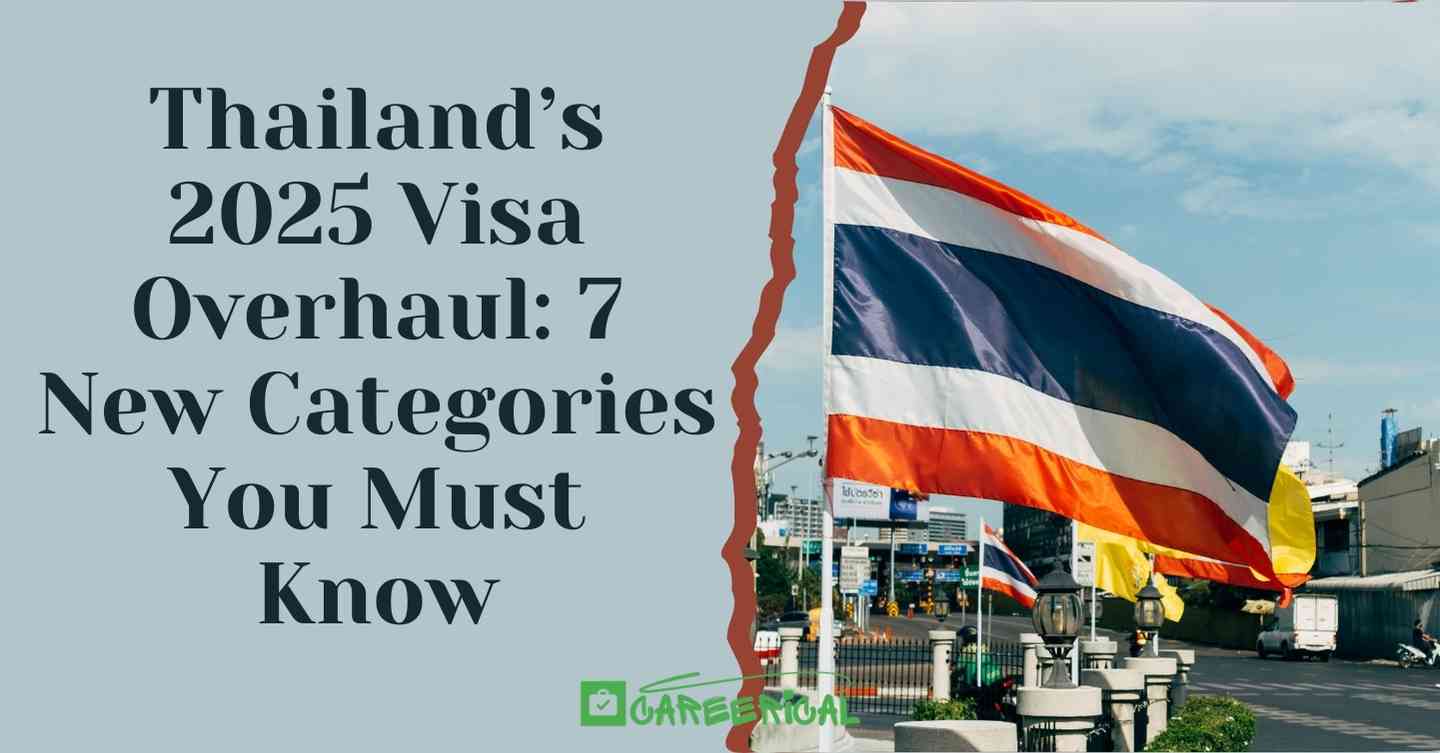Thailand’s 2025 Visa Overhaul: 7 New Categories You Must Know
Thailand has officially streamlined its Non-Immigrant visa system, reducing the number of categories from 17 to just 7. This change, effective August 31, 2025, is designed to simplify the application process without altering who qualifies or what rights visa holders have. These changes to the Non-Immigrant visa landscape will impact applications under the new Thailand Non-Immigrant visa changes.
If you’re planning to work, study, retire, or reunite with family in Thailand, this update matters because it involves significant Thailand Non-Immigrant visa changes. Here’s what you need to know.
Why Thailand Changed Its Visa System
For years, Thailand’s Non-Immigrant visa categories were a maze of overlapping labels. Applicants often struggled to figure out which type applied to them—and even embassy staff found it confusing. With these Thailand Non-Immigrant visa changes, simplification is the goal.
The Ministry of Foreign Affairs decided to clean things up. By merging similar categories and removing redundancies, the government aims to make the system more efficient and easier to navigate.
What Doesn’t Change
If you already hold a Non-Immigrant visa, you’re not affected. Your visa remains valid, and your rights are unchanged. The reform is about simplifying labels—not tightening rules associated with the Thailand Non-Immigrant visa changes.
Recommended: Full Ride to Thailand + Job Offer: AAPICO Master’s Scholarship 2025 at AIT
So while the names and groupings are new, the core requirements and benefits stay intact.
The 7 New Visa Categories Explained
Here’s how Thailand’s Non-Immigrant visas are now organized after the recent changes, which form a key part of the Thailand Non-Immigrant visa changes:
1. F (Official)
For diplomats, government officials, and employees of international organizations. This visa supports official duties under government-to-government agreements.
2. B (Business)
Covers employment, investment, trade, and company visits. It merges older categories like B, B-A, IM, IB, and EX into one streamlined option for business-related activities, aligning with Thailand Non-Immigrant visa changes.
3. ED (Education)
Designed for students, teachers, researchers, and participants in academic programs. It now includes what used to be ED, ED-A, R, R-A, and RS visas.
4. M (Mass Media)
For journalists, reporters, film crews, and media professionals working in Thailand. This visa ensures proper accreditation for those producing content in the country.
5. O (Others)
A broad category for family reunions, dependents, retirees, and long-stay visitors. It consolidates O, O-A (retirement), and O-X (10-year stay) visas into updated categories as part of the Thailand Non-Immigrant visa changes.
6. L-A (Labour)
Issued to foreign nationals employed in Thailand. This visa focuses on labor-related activities and typically requires additional work permits.
7. O L-A
A hybrid category for applicants whose situations overlap between family/dependent and labor purposes. It’s designed for cases that don’t fit neatly into either “O” or “L-A.”
You can find a full breakdown on Business Today’s visa reform coverage.
What This Means for Applicants
For most travelers and expats, the application process will feel familiar. You’ll still need to meet the same requirements and submit the same documents. The key difference is in how your visa is labeled due to the Thailand Non-Immigrant visa changes.
If you’re applying after August 31, 2025, make sure to check which new category your purpose of stay falls under. For example, if you were previously applying for an ED-A visa, you’ll now apply under the ED category.
This change is expected to reduce confusion, speed up processing times, and make it easier for applicants to understand their options now that Thailand Non-Immigrant visa changes are applied.
Final Thoughts
Thailand’s visa reform is a welcome update for anyone navigating the country’s immigration system. By reducing the number of categories to seven, the government is making the process clearer and more efficient—without changing who qualifies or what rights are granted under the Thailand Non-Immigrant visa changes.
If you’re planning to apply for a Non-Immigrant visa, take a moment to review the new structure and ensure your application aligns with the updated categories.
More Opportunities:
- Study in Canada for Free: University of Saskatchewan Scholarships 2026
- 500 Hours to Residency: How to Qualify for the UAE Golden Visa Through Volunteering
- Tier 2 Visa Sponsorship: Care Assistant Jobs in the UK
- Richard C. Malmsten Memorial Foundation Scholarship 2026 at the University of Gothenburg
- 🇨🇭 Visa Sponsored Farm Worker Jobs in Switzerland for 2025


Post Comment